

Cécile Lainé – Just a French teacher passionate about growing alongside her students. Jackie Gerstein, Ed.D. Makerspaces, Maker Education, STEM, and STEAM are gaining lots of traction in Kindergarten though college level education.

Articles, resources on social media, and conference presentations on these topics are proliferating at a rate that most educators are now familiar with maker education. Makerspaces like vocational shops and science labs are great additions to schools. They often contain the tools, machinery, and technologies associated with making – 3D printers, laser cutters, vinyl cutters, high tech robotics, vocational tech machinery. These are great for educational institutions and learners that can afford them. Problems occur when administrators, educators, learners, and communities come to believe that maker education is synonymous with these tools and spaces. A classroom or library can be transformed into its own makerspace, a space for powerful student learning by doing the following realistic and workable actions: Removal of Archaic, Non-Flexible Classroom Desks. Freedom To Learn Project.
5 Blogs to Follow to Get You Ready for the School Year. It’s August… school will be starting soon for many of us.
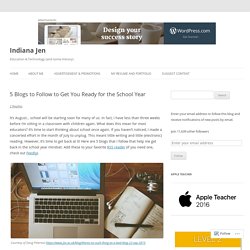
In fact, I have less than three weeks before I’m sitting in a classroom with children again. What does this mean for most educators? It’s time to start thinking about school once again. If you haven’t noticed, I made a concerted effort in the month of July to unplug. This meant little writing and little (electronic) reading. Cult of Pedagogy Cult of Pedagogy covers everything from the social implications of education to specific practices in your classroom. EDU Wells I had the privilege of meeting Richard Wells at a conference a few years ago. Media! While Marti Weston may have retired from schools, she has not retired from education. Mind/Shift KQED This public media blog covers educational topics across a myriad of topics: low-income students, special education, department of education, etc.
Hack Education Audrey Waters certainly knows what’s happening in education. A Look Back: “The Fifteen Tech Tools & Non-Tech Resources I Use Most Often With My Students” In February, this blog will be celebrating its ten-year anniversary!

Leading up to it, I’m re-starting a series I tried to do in the past called “A Look Back.” Each week, I’ll be re-posting a few of my favorite posts from the past ten years. 10 Excellent Educational Blogs To Follow – #EdTech4Beginners. Educational Blogs are simply brilliant.
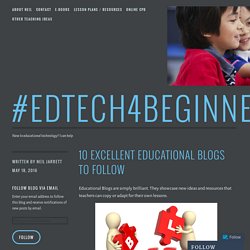
They showcase new ideas and resources that teachers can copy or adapt for their own lessons. Below I have listed 10 Blogs that are fantastic and will give you lots of new things to try. Remember to hit the follow button when you get to the blog, so you get an update every time the author posts. One Stop Teacher Shop - Teaching Resources for Upper Elementary: Free Resources for Non-Fiction Texts. I love to have a collection of Non-Fiction Articles/Texts on hand.
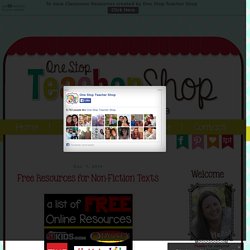
I am constantly using them in my Reading Centers. If you haven't already checked out my post on "No-Fuss Literacy Centers", you may be wondering how I use my collection of texts... For one of my daily centers, my students complete a Non-Fiction Activity Sheet that is aligned with the current skill we are working on. They can choose the Non-Fiction text of their choice, and complete the activity for the week.
Each week I put out a different Non-Fiction Activity Sheet, and again, my students choose their own text. 69154 Pins. PEN00017. iHeartLiteracy: Technology in the Classroom. Let's get some technology resources together for teachers.
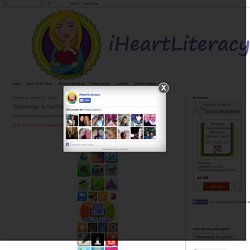
Here are just a few: 1) 27 Apps that have changed my Teaching and Learning Practice 2) What do you want kids to do with technology? 3) 9 Powerful (And FREE) Tools To Boost Summer Learning 4) 10 Exciting Ways to Use Mobile Phones in the Classroom 5) Apps That Rise to the Top: Tested and Approved By Teachers. A Literate Life - Anchor Charts. Karen Mensing. Life in Fifth Grade: Increasing Students' Thinking! Moving Past "Right There" Questions. One of my goals this year is to improve the rigor in my classroom.
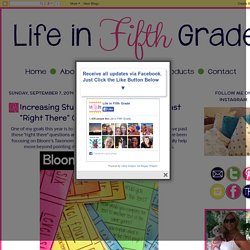
I want to move past those "right there" questions and really make my kids dig deep into the text. I've been focusing on Bloom's Taxonomy as a result and I created a resource that has really help move beyond pointing directly to the answer. I call them bloom's ladders. Here's what each ladder looks like: We treat it like a video game. As the levels increase, I only require students to complete a certain number of tasks since those tasks require more detail and/or preparation. With this resource, I've also created a slightly different variation called "How High Can You Go? " Still "played" the same way, but with these all 6 Bloom's Levels are on one ladder.
I've also made these higher level task cards that can be used in a number of different ways. 20 tasks are included.